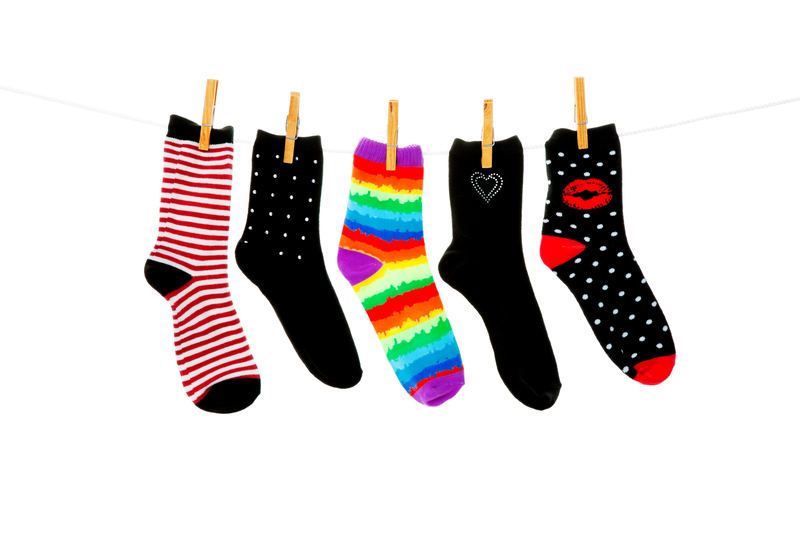Expert Tips for Washing Velvet Curtains Without Damaging the Fabric
Posted on 01/06/2025
Expert Tips for Washing Velvet Curtains Without Damaging the Fabric
Velvet curtains add a touch of elegance and luxury to any space. Their deep, beautiful texture and light-absorbing properties make them a popular choice for both contemporary and classic interiors. However, while velvet curtains are undeniably gorgeous, washing and caring for them can be a daunting task. The lush pile and delicate fibers require special attention to avoid permanent damage. Whether your curtains are made from silk, cotton, or synthetic velvet, understanding the right cleaning methods is vital to maintain their beauty and extend their lifespan.
This comprehensive guide covers expert tips for washing velvet curtains without damaging the fabric. You'll discover step-by-step instructions, precautions, frequently asked questions, and even secrets that professional cleaners use--ensuring your velvet drapes look stunning for years to come.
Why Special Care Is Needed When Washing Velvet Curtains
Velvet is a unique fabric, woven with short, dense fibers that create its signature softness and sheen. Unlike other curtain materials, the pile in velvet can become crushed, misshapen, or even bald if not treated properly. Furthermore, moisture can cause streaks or watermarks, making cleaning even more of a challenge.
Before reaching for any detergent or tossing your curtains in the washing machine, it's crucial to understand why specialized wash methods are essential for velvet:
- Delicate fibers: Velvet's nap (raised surface) is vulnerable to matting and crushing.
- Sensitivity to moisture: Water and cleaning solutions can leave stains or rings if not handled properly.
- Color fading: Harsh chemicals and sunlight exposure during drying can lead to color loss.
- Structural weakness: Over-washing or rough handling may result in thinning or tearing of the fabric.
Knowing these characteristics will help ensure you choose the safest and most effective wash technique for your luxurious velvet drapes.

Step-by-Step Guide: How to Wash Velvet Curtains Safely
Step 1: Check the Curtain's Care Label
Always begin by examining your curtain's care tag. Different types of velvet fabric--such as silk, cotton, and polyester--have distinct cleaning requirements. The label should indicate whether your curtains are machine washable, suitable for hand washing, or dry-clean only. If in doubt, err on the side of caution and opt for dry cleaning.
Step 2: Remove Dust and Loose Debris
Before washing velvet curtains, use a soft-bristled brush or the upholstery attachment of your vacuum to gently remove surface dust. This prevents grit from embedding further into the fabric during cleaning.
- Hang the curtains and brush downward, following the direction of the nap (the pile of the velvet).
- For stubborn pet hair or lint, use a sticky lint roller or specialized velvet brush.
Step 3: Spot Test Before Full Cleaning
Every velvet fabric responds differently to cleaning solutions, so test your chosen method on an inconspicuous area first. Dab a small amount of your cleaning solution with a clean, white cloth, then check for colorfastness, shrinking, or texture damage after it dries.
Step 4: Select an Appropriate Washing Method
Not all velvet curtains can be washed the same way. Here's a breakdown of three main cleaning options:
1. Dry Cleaning (Recommended for Most Velvet Curtains)
Most true velvet curtains and those with a lining recommend dry cleaning. This method avoids the direct application of water, preserving the texture and pile.
- Take your curtains to a trusted professional dry cleaner, especially if the label says 'dry clean only'.
- Mention any specific stains or problematic areas so they use appropriate spot treatments.
2. Hand Washing Velvet Curtains (For Some Cotton or Synthetic Velvets)
If your care label allows for washing, hand washing is usually gentler than machine washing.
- Fill a clean bathtub or large basin with lukewarm water.
- Add a small amount of mild, non-alkaline detergent safe for delicates.
- Submerge one curtain panel at a time, gently agitating the water with your hands. Avoid rubbing or wringing the fabric!
- Let it soak for a few minutes, then drain and refill with clean water to rinse.
- Support the curtain fully while lifting it out to prevent stretching the fabric.
3. Machine Washing Velvet Curtains (Only for Certain Synthetic Velvets)
Rarely, some polyester or crushed velvet curtains are labeled as machine washable.
- Use a gentle cycle with cold water and a mild detergent.
- Place curtain panels in a pillowcase or mesh laundry bag to minimize friction.
- Wash separately from other fabrics to avoid pile damage.
How to Dry Velvet Curtains Without Deforming the Fabric
Never wring out or twist velvet curtains. This can flatten the pile and distort the curtain's shape. Instead, follow these professional drying methods:
- Roll, don't squeeze: Lay the wet curtain flat on a clean towel. Roll up gently to blot away excess water, unrolling and repeating with dry towels if necessary.
- Air dry vertically: Hang the curtain back on its rod or a sturdy line, making sure the fabric's weight isn't concentrated in one spot. The air circulating evenly prevents watermarks and helps the nap dry in a uniform direction.
- Keep away from heat and sunlight: Direct sun or heated dryers can cause color fading and shrinkage. Air dry in a ventilated, shaded area indoors.
Restoring the Velvet Pile
After drying, the pile may appear flattened. To revive that luxurious look:
- Use a handheld steamer (never an iron directly on the fabric), sweeping gently along the nap to fluff up the fibers.
- For stubborn flat spots, use a velvet brush or a soft clothing brush to lift the pile.
- Avoid pressing too hard or going against the direction of the nap, as this may cause "bald" spots.
Pro Tips for Ongoing Velvet Curtain Care
- Regular dusting: Use a soft brush or vacuum with a gentle setting weekly, especially in high-traffic areas.
- Spot cleaning spills quickly: Blot (don't rub) any liquid with a clean, dry cloth to avoid water marks.
- Avoid excessive washing: Only wash or dry clean when absolutely necessary. Overwashing shortens your curtains' life and beauty.
- Rotate your curtains: If possible, rotate curtain panels occasionally so they wear evenly and don't develop permanent sun or crush marks.
- Store with care: If removing curtains seasonally, roll rather than fold to prevent crease marks. Store in a breathable cotton garment bag away from light and moisture.
Common Mistakes to Avoid When Washing Velvet Drapes
- Skipping the spot test: Assuming all velvets react the same can lead to disaster. Always test cleaners and water on a hidden area first!
- Using too much water or agitation: Over-soaking or scrubbing risks flattening the fabric's nap and causing water stains.
- Exposing to direct heat: Never tumble dry or use a hot iron.
- Allowing lint or debris to accumulate: Not dusting regularly can embed grit into the pile, making cleaning harder.
- Using harsh chemicals or bleach: These can discolor, weaken, and degrade velvet fibers.
Frequently Asked Questions About Washing Velvet Curtains
Can all velvet curtains be washed at home?
No, not all velvet curtains are suitable for home washing. Genuine silk or rayon velvet should be dry cleaned by professionals. Synthetic velvets (such as polyester) may sometimes be hand or machine washed, but confirm with your manufacturer's care label.
What detergent should I use for cleaning velvet drapes?
Always select a mild, non-alkaline detergent designed for delicates or woolens. Avoid products with bleach, optical brighteners, or strong fragrances.
Can you steam velvet curtains to clean them?
Yes, steaming is often safe and helps refresh the nap, remove wrinkles, and lightly sanitize the fabric. Use a handheld steamer, keeping it a few inches above the surface. Avoid over-wetting the fabric.
How often should I wash or dry clean velvet curtains?
Only clean them when visibly soiled or once every 12-18 months to preserve the fabric. Regular dusting and prompt spot cleaning will reduce the need for frequent washing.
How do I prevent velvet curtains from fading?
Keep velvet curtains out of direct sunlight, use lined curtains to protect from UV rays, and always air dry indoors, away from heat sources.

Professional Velvet Curtain Cleaning Services: When to Call an Expert
If your velvet curtains are antique, extremely valuable, or comprised of silk or rayon, it's best to consult a professional curtain cleaner. Their expertise ensures:
- No risk of shrinkage, distortion, or color loss.
- Specialized spot treatments for tough stains.
- Fabric-friendly drying and steaming.
For standard synthetic velvets, confident DIYers may safely clean at home, but for older or delicate types, professional care is the best protection.
Final Thoughts: Preserve Your Velvet Curtains' Luxe Appeal
Velvet drapes are an investment--one that can last for decades and add unrivaled sophistication to any room when properly cared for. Following these expert tips for washing velvet curtains without damaging the fabric guarantees that your curtains will remain plush, vibrant, and pristine.
Key takeaways:
- Always read and follow the care label instructions for your specific velvet type.
- Use gentle cleaning techniques, minimal agitation, and strictly avoid harsh detergents.
- Air dry and restore the pile to keep velvet soft and lustrous.
- Call a professional for mixed fabrics, complicated stains, or high-value drapes.
With these comprehensive velvet curtain care instructions, you can enjoy lavish, beautiful draperies that elevate your home decor--without fear of accidental damage.
If you're searching for the best ways to wash velvet curtains without causing harm, always prioritize gentle, label-approved cleaning methods, regular maintenance, and smart drying practices. With the advice from this guide, you'll keep your velvet drapes gleaming like new!



